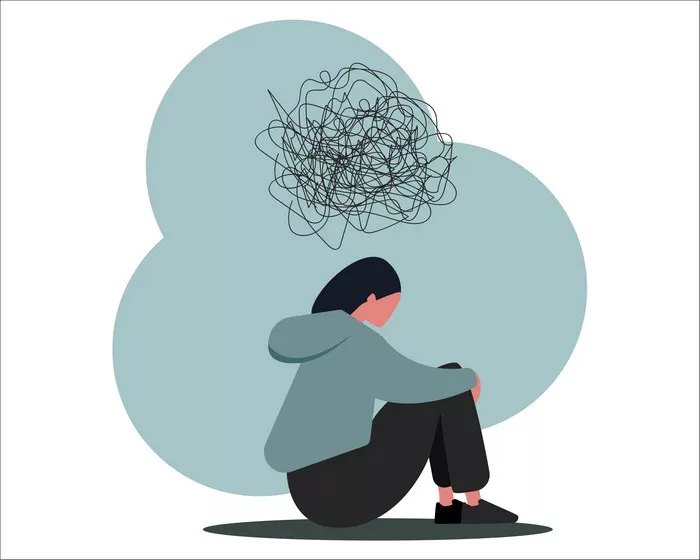Fear of mental illness can be a significant barrier to seeking help and achieving mental well-being. This fear often stems from stigma, misunderstanding, and a lack of knowledge about mental health. Overcoming this fear is crucial for those who suspect they may have a mental health condition, as well as for their loved ones. This article provides a comprehensive guide to understanding and overcoming the fear of mental illness.
Understanding the Fear of Mental Illness
What is the Fear of Mental Illness?
The fear of mental illness, also known as psychophobia, is an irrational and persistent fear of developing a mental health disorder or encountering someone who has one. This fear can manifest in various ways, including anxiety about personal mental health, avoidance of individuals with mental illness, and reluctance to seek help for mental health concerns.
Sources of Fear
Stigma: Negative stereotypes and societal prejudices about mental illness can create fear and shame.
Lack of Knowledge: Misunderstandings and myths about mental health can lead to fear of the unknown.
Personal Experience: Negative experiences with mental illness, either personally or through others, can contribute to fear.
Media Representation: Often, media portrays mental illness inaccurately, emphasizing violence or instability, which can amplify fear.
Educating Yourself About Mental Illness
Learn the Facts
Education is a powerful tool in overcoming fear. Understanding what mental illness is, its causes, and how it can be treated can demystify the condition and reduce anxiety.
Definition and Types: Mental illnesses are medical conditions that affect mood, thinking, and behavior. Common types include depression, anxiety disorders, bipolar disorder, and schizophrenia.
Causes: Mental illnesses can result from a combination of genetic, biological, environmental, and psychological factors.
Treatment: Many mental health conditions are treatable with therapy, medication, and lifestyle changes.
Reliable Sources of Information
Mental Health Organizations: Websites like the National Alliance on Mental Illness (NAMI) and Mental Health America provide accurate and comprehensive information.
Medical Professionals: Consulting psychiatrists, psychologists, and other mental health professionals can provide expert insights.
Scientific Literature: Reading peer-reviewed journals and studies can offer a deeper understanding of mental health conditions and treatments.
Confronting Stigma
Recognizing Stigma
Stigma involves negative attitudes and beliefs about mental illness that lead to discrimination and social exclusion. Recognizing stigma is the first step in combating it.
Self-Stigma: Internalized negative beliefs about mental illness can prevent individuals from seeking help.
Public Stigma: Societal attitudes and prejudices can create barriers to acceptance and support.
Structural Stigma: Institutional policies and practices that discriminate against those with mental illness.
Challenging Stigma
Education and Awareness: Increasing awareness and understanding about mental health can reduce stigma.
Positive Representation: Sharing stories of recovery and resilience can counter negative stereotypes.
Advocacy: Supporting policies and initiatives that promote mental health equity and inclusion.
Building Resilience and Coping Skills
Developing Coping Strategies
Effective coping strategies can help manage fear and anxiety related to mental illness.
Mindfulness and Meditation: Practices like mindfulness meditation can reduce anxiety and improve emotional regulation.
Cognitive Behavioral Techniques: Identifying and challenging irrational thoughts about mental illness can reduce fear.
Stress Management: Techniques such as deep breathing, exercise, and hobbies can alleviate stress and promote mental well-being.
Seeking Support
Professional Help: Therapists, counselors, and support groups can provide guidance and support in overcoming fear.
Peer Support: Connecting with others who have similar experiences can offer validation and encouragement.
Family and Friends: Open communication with loved ones can provide a network of support and understanding.
Taking Action
Self-Assessment and Reflection
Reflecting on personal beliefs and attitudes towards mental illness can help identify areas for change.
Journaling: Writing about your fears and experiences with mental illness can provide clarity and insight.
Self-Questioning: Asking yourself why you fear mental illness and challenging those reasons can be enlightening.
Mindfulness Practices: Engaging in mindfulness can help you stay present and reduce anxiety about the future.
Seeking Professional Help
Therapy: Cognitive-behavioral therapy (CBT) is particularly effective in addressing fears and irrational thoughts.
Medication: In some cases, medication may be necessary to manage severe anxiety or depression.
Support Groups: Joining support groups can provide a sense of community and shared understanding.
Education and Advocacy
Mental Health Literacy: Increasing your knowledge about mental health can empower you and reduce fear.
Advocacy Efforts: Participating in mental health advocacy can help reduce stigma and support others facing similar fears.
Community Involvement: Engaging in community activities and discussions about mental health can promote a more accepting environment.
Practical Tips for Overcoming Fear
Gradual Exposure
Gradual exposure to the source of your fear can help desensitize you and reduce anxiety.
Educate Yourself Incrementally: Start with basic information about mental illness and gradually move to more complex topics.
Engage in Conversations: Talk to friends, family, or mental health professionals about your fears and mental health in general.
Volunteer: Volunteering with mental health organizations can provide a deeper understanding and reduce fear through direct experience.
Developing Empathy
Understanding the experiences of those with mental illness can foster empathy and reduce fear.
Listen to Stories: Reading or listening to personal stories of people with mental illness can humanize the experience.
Interact with Individuals: If possible, interact with individuals who have mental illness in a safe and supportive environment.
Reflect on Shared Humanity: Recognize that mental illness can affect anyone and that those with mental illness deserve compassion and understanding.
Fostering a Positive Mindset
Maintaining a positive outlook can help counteract fear and anxiety.
Focus on Recovery Stories: Highlighting success stories of individuals who have managed their mental illness can provide hope and reduce fear.
Practice Gratitude: Regularly practicing gratitude can improve overall mental health and resilience.
Set Realistic Goals: Setting and achieving small, realistic goals can build confidence and reduce anxiety.
The Role of Mental Health Professionals
Finding the Right Professional
Seeking help from the right mental health professional is crucial for effective treatment and support.
Psychologists: Specialize in therapy and behavioral interventions.
Psychiatrists: Medical doctors who can prescribe medication and provide therapy.
Counselors: Trained to offer support and guidance for various mental health issues.
What to Expect in Therapy
Understanding what to expect in therapy can reduce fear and anxiety about seeking help.
Initial Assessment: The therapist will gather information about your history and concerns.
Treatment Plan: Together, you will develop a plan that includes goals and strategies for overcoming fear.
Ongoing Support: Regular sessions will provide a space to discuss progress, challenges, and adjustments to the treatment plan.
Building a Therapeutic Relationship
A strong therapeutic relationship is vital for effective treatment.
Open Communication: Be honest with your therapist about your fears and concerns.
Trust and Confidentiality: Trust that your therapist is there to help and that your sessions are confidential.
Active Participation: Engage actively in your therapy sessions and follow through with agreed-upon strategies.
Embracing a Holistic Approach
Integrating Physical and Mental Health
Recognize the connection between physical and mental health.
Exercise: Regular physical activity can improve mood and reduce anxiety.
Nutrition: A balanced diet supports overall mental health.
Sleep: Ensure you get enough restful sleep, as poor sleep can exacerbate anxiety and fear.
Spiritual and Emotional Well-Being
Addressing spiritual and emotional needs can complement traditional mental health treatments.
Mindfulness and Meditation: Practices that promote mindfulness can reduce fear and improve emotional regulation.
Creative Expression: Engaging in creative activities like art, music, or writing can provide emotional relief and insight.
Community and Connection: Building strong social connections and community involvement can provide emotional support and reduce isolation.
Conclusion
Overcoming the fear of mental illness is a multifaceted process that involves education, confronting stigma, building resilience, seeking support, and taking proactive steps towards mental well-being. By understanding mental illness, challenging negative beliefs, and fostering a supportive environment, individuals can reduce their fear and promote a healthier, more inclusive society. Remember that seeking help is a sign of strength, and with the right support and strategies, it is possible to overcome fear and achieve mental wellness.
[inline_related_posts title=”You Might Be Interested In” title_align=”left” style=”list” number=”6″ align=”none” ids=”9123,9126,9129″ by=”categories” orderby=”rand” order=”DESC” hide_thumb=”no” thumb_right=”no” views=”no” date=”yes” grid_columns=”2″ post_type=”” tax=””]

































